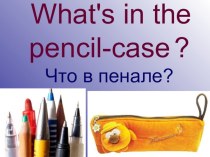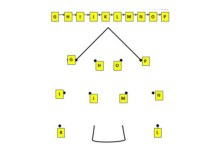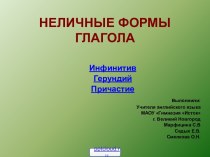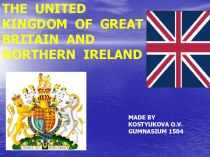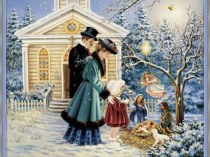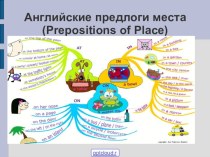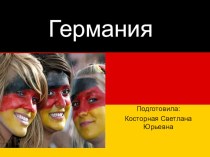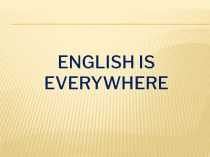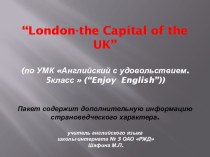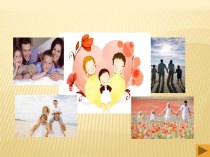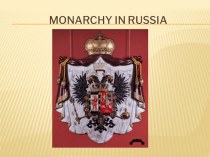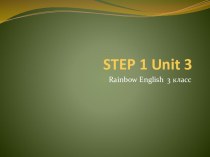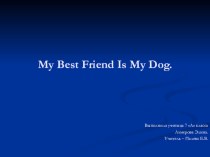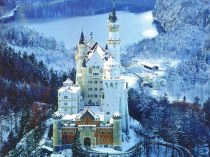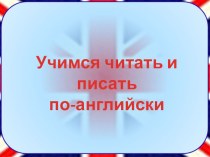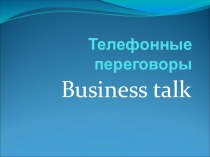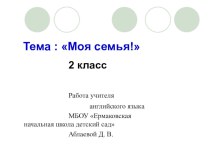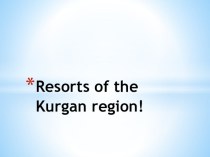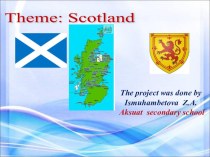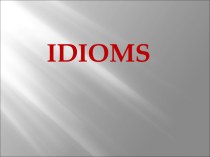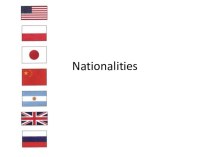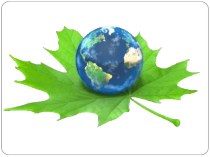- Главная
- Разное
- Бизнес и предпринимательство
- Образование
- Развлечения
- Государство
- Спорт
- Графика
- Культурология
- Еда и кулинария
- Лингвистика
- Религиоведение
- Черчение
- Физкультура
- ИЗО
- Психология
- Социология
- Английский язык
- Астрономия
- Алгебра
- Биология
- География
- Геометрия
- Детские презентации
- Информатика
- История
- Литература
- Маркетинг
- Математика
- Медицина
- Менеджмент
- Музыка
- МХК
- Немецкий язык
- ОБЖ
- Обществознание
- Окружающий мир
- Педагогика
- Русский язык
- Технология
- Физика
- Философия
- Химия
- Шаблоны, картинки для презентаций
- Экология
- Экономика
- Юриспруденция
Что такое findslide.org?
FindSlide.org - это сайт презентаций, докладов, шаблонов в формате PowerPoint.
Обратная связь
Email: Нажмите что бы посмотреть
Презентация на тему по английскому языку: Россия - моя Родина
Содержание
- 2. Russia – my Homeland
- 3. Цельформирование коммуникативной компетенции учащихся на основе изученных лексических единиц, речевых и грамматических структур по страноведческой тематике
- 4. ЗадачиОбразовательные задачи:1. свободно высказываться в виде монологической
- 5. The political system of the Russian
- 6. The political system of the Russian Federation Branches of power
- 7. The political system of the Russian
- 9. What are Russia`s state symbols?
- 10. What are Russia`s state symbols?
- 11. The national emblem of Russia is the double-headed
- 12. Home taskEx 2 p 3 work book Ex 6 p 7 student’s book
- 13. Скачать презентацию
- 14. Похожие презентации
Russia – my Homeland


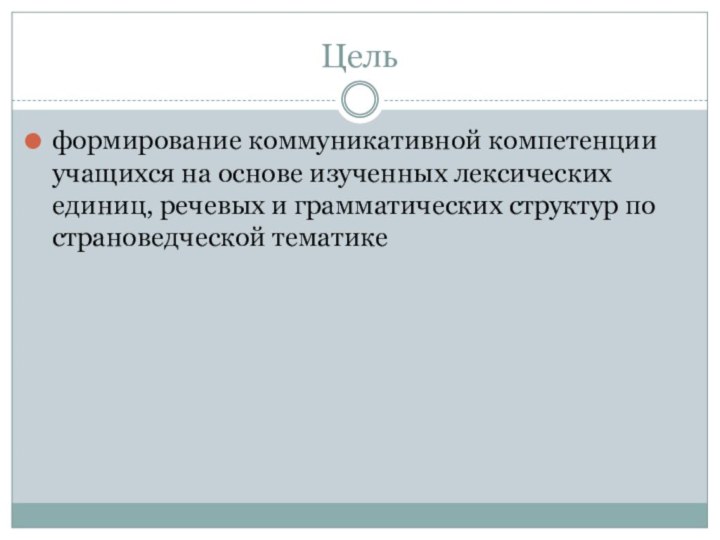

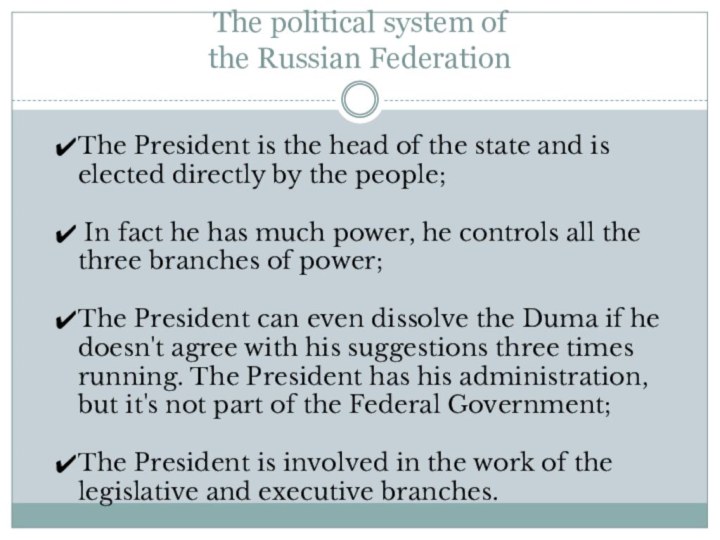



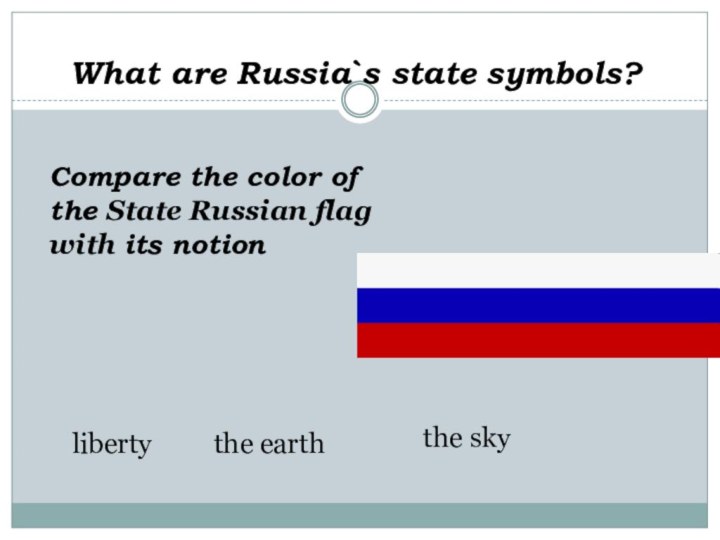
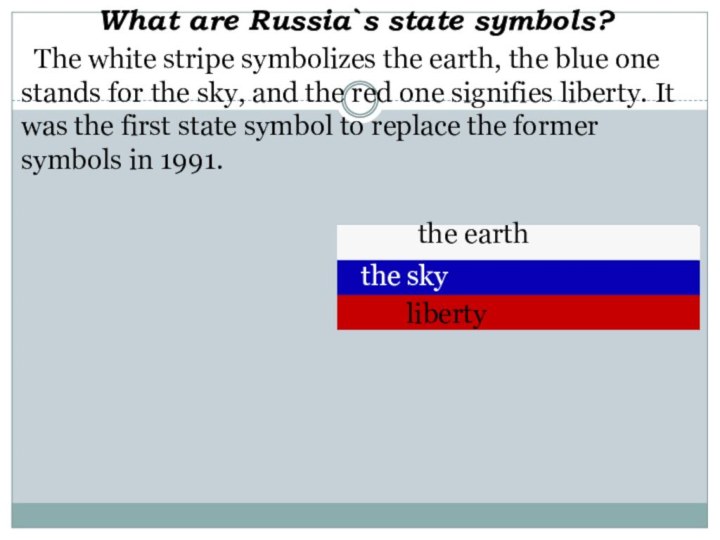
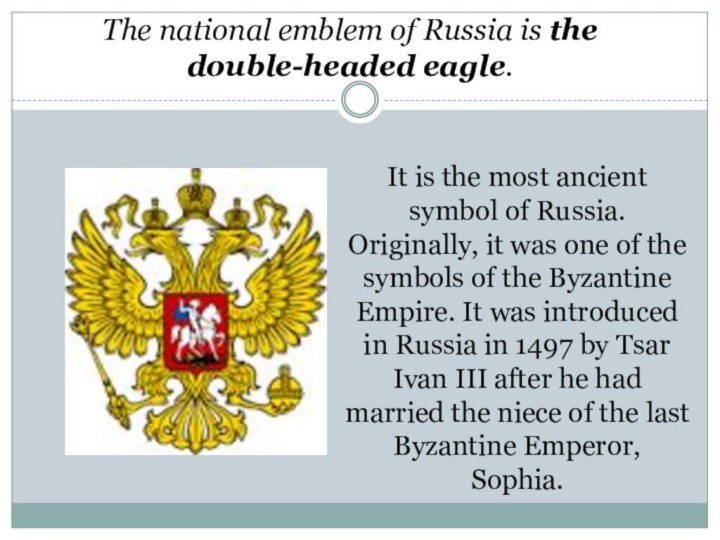

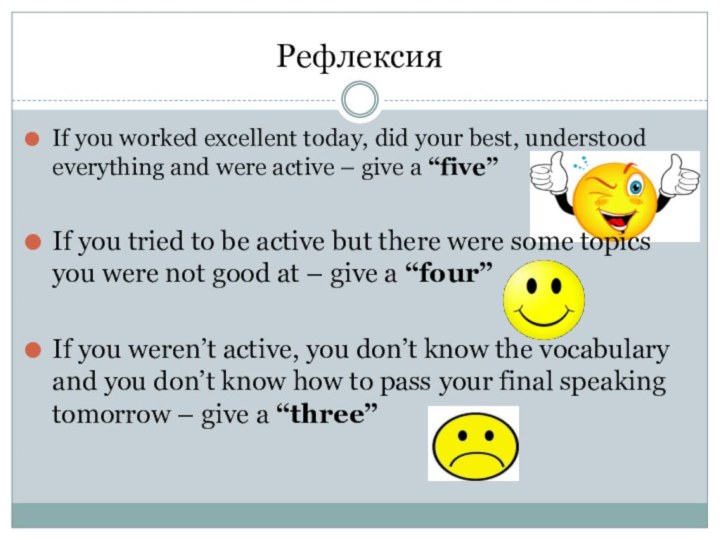
Слайд 3
Цель
формирование коммуникативной компетенции учащихся на основе изученных лексических
единиц, речевых и грамматических структур по страноведческой тематике
Слайд 4
Задачи
Образовательные задачи:
1. свободно высказываться в виде монологической и
диалогической речи.
2. Тренировка обучающихся в умении вести общение на
английском языке в предлагаемых ситуациях.Развивающие задачи:
1. Формирование и развитие коммуникативных умений и навыков (умение пользоваться речью: монологической, диалогической; умение слушать и слышать; умение участвовать в дискуссии);
2. Формирование и развитие учебно-организационных умений и навыков (взаимоконтроль, навыки самостоятельной работы, умение участвовать в коллективной познавательной деятельности, умение обобщать и анализировать).
Воспитательные задачи:
1. Воспитание чувства любви и уважения к своей стране и родному краю.
2. Развитие патриотических качеств личности
Слайд 5
The political system of
the Russian Federation
The
President is the head of the state and is
elected directly by the people;In fact he has much power, he controls all the three branches of power;
The President can even dissolve the Duma if he doesn't agree with his suggestions three times running. The President has his administration, but it's not part of the Federal Government;
The President is involved in the work of the legislative and executive branches.
Слайд 7
The political system of
the Russian Federation
Branches of power
legislative
branch
executive
branch
judicial
branch
Federation Council,
State Duma
(Constitutional Court,
the Supreme Court,
regional's courts)
(President)
Federal Assembly
Слайд 9
What are Russia`s state symbols?
the earth
the sky
liberty
Compare the color of the State
Russian flag with its notion
Слайд 10
What are Russia`s state symbols?
The white stripe symbolizes the earth, the blue one
stands for the sky, and the red one signifies liberty. It was the first state symbol to replace the former symbols in 1991.the earth
the sky
liberty
